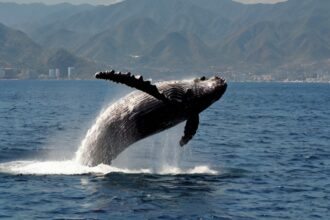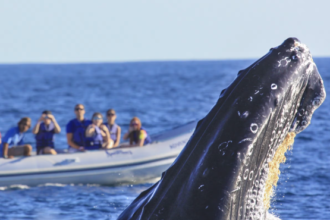Are Orcas Dolphins?
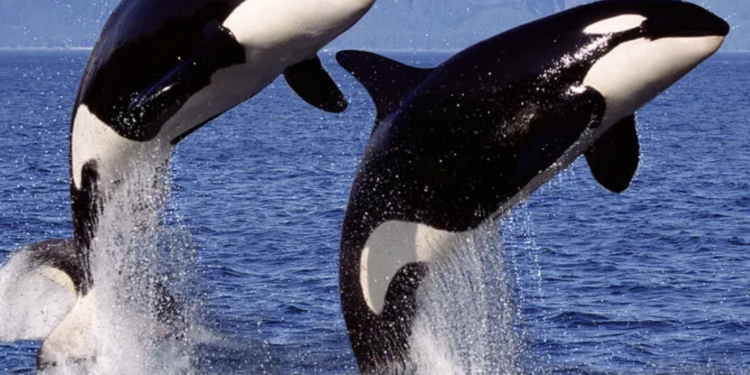
These magnificent marine mammals are actually the largest members of the oceanic dolphin family, Delphinidae, despite their “killer whale” nickname. Male orcas grow up to 32 feet long and weigh as much as 22,000 pounds. Their size makes them the largest among all dolphin species.
You can find these powerful predators in every ocean worldwide. They live in complex social groups called pods that include up to 40 individuals. The name “killer whale” came from ancient sailors who saw orcas hunting larger whales, which created confusion about their true classification.
This piece dives into the fascinating connection between orcas and dolphins. It reveals their shared family ties and the unique traits that make these intelligent creatures stand out in the dolphin family.
Table of Contents
- 1 The Great Ocean Mystery: Are Orcas Whales or Dolphins?
- 2 Where to Witness These Ocean Giants
- 3 Physical Features That Tell the True Story
- 4 Family Ties: The Dolphin Connection
- 5 Hunting and Feeding Behaviors
- 6 Here are some FAQs if you ever wondered about if are orcas dolphins:
- 6.1 Are orcas actually dolphins?
- 6.2 What is an orca classified as?
- 6.3 Are bottlenose dolphins related to orcas?
- 6.4 What did orcas evolve from?
- 6.5 Who is smarter, an orca or a dolphin?
- 6.6 Are whales technically dolphins?
- 6.7 Are there only 73 orcas left?
- 6.8 Are orcas friendly to humans?
- 6.9 Are orcas faster than dolphins?
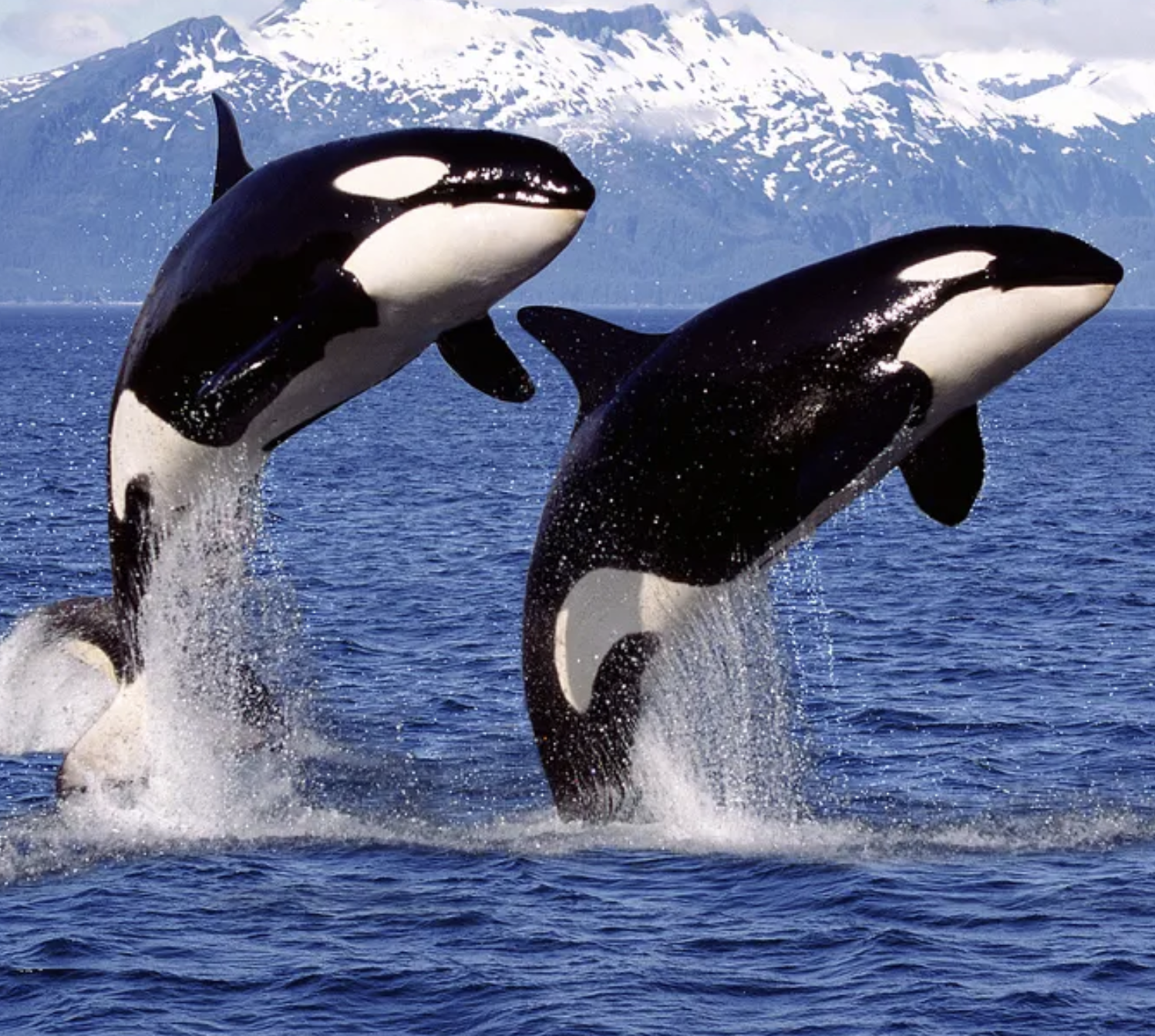 The Great Ocean Mystery: Are Orcas Whales or Dolphins?
The Great Ocean Mystery: Are Orcas Whales or Dolphins?
Marine mammals, especially ocean giants, never cease to amaze scientists with their surprises. Most people think orcas are whales because of their massive size and common name, but their scientific classification tells a different story.
Common misconceptions explained
Ancient sailors gave birth to the term “killer whale” after they saw these powerful predators hunt larger whales. The original name was “whale killers,” which later became “killer whales”. Spanish sailors called them “ballena asesina” (assassin whale). German mariners named them “schwertwal” (sword whale) because of their distinctive dorsal fin.
Scientific classification breakdown
Whales, dolphins, and porpoises are members of the order Cetacea. Scientists split them into two main groups:
- Toothed whales (Odontoceti)
- Narwhals & belugas
- Sperm whales
- Beaked whales
- Dolphins
- Porpoises
Orcas belong to the family Delphinidae, which makes them the largest members of the oceanic dolphin family. Their scientific name tells an interesting story – Orcinus orca has deep meaning. Orcinus means “belonging to the kingdom of the dead,” while orca describes their large-bellied shape.
Why names can be misleading
Several factors create confusion about orcas classification. Their impressive size often makes people think they’re whales, since they can grow up to 26 feet long and weigh up to 6 tons. Scientists have also identified various ecotypes as different orca populations evolved distinct characteristics.
Recent genetic studies show that several killer whale ecotypes are genetically distinct groups that don’t share genes. These differences go beyond looks – each ecotype has its own hunting priorities, foraging techniques, dialects, and social structures.
Scientists still debate whether these distinct populations might represent different subspecies or even species. Scientists have named up to 23 species and four subspecies of killer whales in scientific literature. However, only one species, O. orca, has official global recognition.
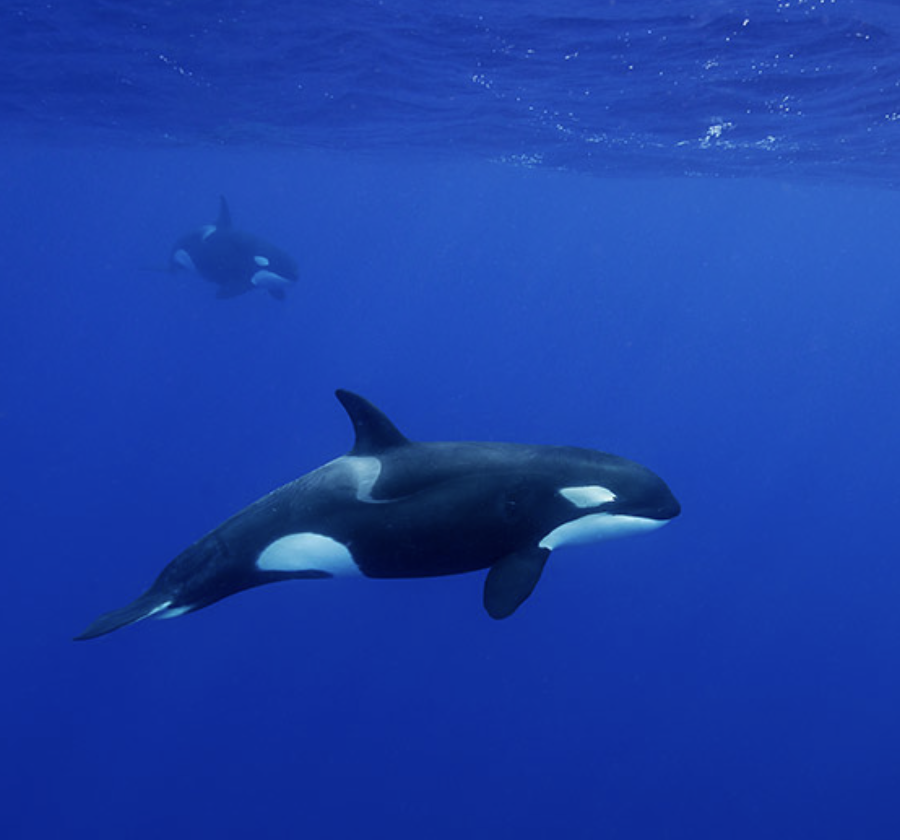
Where to Witness These Ocean Giants
Seeing these magnificent marine mammals in their natural habitat is a unique experience. These amazing creatures show their remarkable adaptability in environments ranging from Antarctica’s icy waters to Mexico’s tropical seas.
Prime orca watching locations worldwide
The Antarctic waters are home to about 25,000 orcas – half of the world’s population. Several locations stand out for anyone wanting to see these incredible creatures:
- Norway’s Tysfjord: Best viewing runs from November to early February
- Iceland’s Snæfellsnes Peninsula: You’ll see them most from January to April
- Vancouver Island: Great sightings happen from May to October
- New Zealand’s Auckland: The Hauraki Gulf has sightings all year round
Best spots to see orcas in Mexico
Mexico’s Pacific coast gives you great chances to spot orcas. Los Cabos has been a hotspot lately – observers spotted five different orca groups in just 10 days during a recent season. The Sea of Cortez is another fantastic location where you can see not just orcas but also fin whales, blue whales, and pilot whales.
The waters around Baja California Sur have become a popular orca-watching destination during humpback whale season. Visitors can watch orcas hunt mobula rays and whale sharks, showing off their natural hunting skills.
Seasonal migration patterns
Orcas follow fascinating migration patterns that match their prey’s movements. The Eastern Tropical Pacific (ETP) orcas between Southern California and Northern Peru look different from others – their saddle patches behind the dorsal fins aren’t as noticeable.
Scientists at the University of Colima have tracked more than 600 individual orcas in Mexican waters. The mainland coast sees most orcas during humpback whale calving season from January through March. Mid-January to mid-February brings the most frequent sightings.
These smart predators use amazing hunting techniques in different areas. Norwegian orcas work as teams using “carousel feeding” to catch herring. New Zealand’s small population of less than 200 orcas has become experts at hunting sharks and rays.
Physical Features That Tell the True Story
Physical characteristics provide compelling evidence of the deep connection between orcas and dolphins. These remarkable creatures display a perfect blend of power and grace in their anatomy.
Comparing orca and dolphin anatomy
Orcas and their dolphin relatives share a streamlined, cylindrical body shape that enables quick swimming. Their bodies taper at both ends to create a fusiform shape that reduces drag in water. Both species have conical-shaped teeth, though orcas possess 40 to 56 interlocking teeth that measure about three inches long.
Size and appearance differences
Male orcas stand out from other dolphins with their impressive dimensions:
- Length: 6 to 8 meters (20-26 feet)
- Weight: Up to 6 tons (13,227 pounds)
- Pectoral flippers: 2 meters long and 1.2 meters wide
Female orcas are smaller than males and typically measure 4.9 to 5.8 meters in length. Regular dolphins reach lengths of 2-4 meters and weigh up to 200 kg.
Distinctive characteristics
Orcas’ most striking feature is their black and white coloration pattern. Their dorsal surface appears black, while the ventral area displays a brilliant white hue. A unique gray patch, known as the ‘saddle’ or ‘cape,’ sits behind their dorsal fin.
Male orcas’ dorsal fin stands tallest among all cetaceans and reaches heights up to 1.8 meters (6 feet). Female dorsal fins curve slightly backward and measure between 0.9 to 1.2 meters in height.
Pectoral flippers do more than aid swimming. These paddle-shaped appendages contain a complex network of veins that regulate body temperature. Each flipper’s structure mirrors human hands, with five digits beneath the surface.
Orcas’ distinctive oval white eyespots sit slightly above and behind each eye and play vital roles in social interaction and hunting coordination. Their countershading pattern – darker on top and lighter underneath – offers excellent camouflage. This pattern blends with ocean depths when viewed from above and the brighter surface when seen from below.
Family Ties: The Dolphin Connection
Deep beneath the ocean’s surface, intricate social bonds shape these remarkable marine mammals’ lives. The connection between orcas and dolphins goes way beyond physical similarities. Their complex social structures and communication patterns tell a fascinating story.
Social structure similarities
These mammals form tight-knit family groups called pods in matrilineal societies. A female, her sons and daughters, and her daughters’ offspring make up these pods that sometimes span four generations. Multiple families live together in a single pod, and each family extends across several generations.
Female orcas lead social hierarchies and maintain strong lifelong bonds. The mother-calf relationship is the life-blood of pod structure. Calves learn social discipline and education from their mothers and other important adults.
Pod behavior patterns
Core groups range from 2 to 15 individuals. Resident pods show remarkable stability, and members rarely separate for more than a few hours. These pods share prey and take part in cooperative hunting. Experienced individuals teach youngsters specific capture techniques.
The Northeastern Pacific has four distinct resident killer whale communities. The Southern Resident community has three pods – J, K, and L – all belonging to the J clan. These pods feed and socialize together, which shows their community’s strong social bonds.
Communication methods
Orcas use three main types of vocalizations:
- Clicks: Used for echolocation and navigation
- Whistles: Continuous tone emissions lasting several seconds
- Pulsed calls: Discrete signals unique to each family
Each pod develops its unique set of calls that creates a distinct dialect passed down through generations. These sophisticated communication systems have multiple dialects. The Southern Resident killer whales’ language has three distinct dialects, one for each pod.
Orcas show remarkable vocal learning abilities. Research reveals they can match their vocalizations to bottlenose dolphins when socialized with them. One killer whale learned to make chirping calls that were taught only to bottlenose dolphins before.
Their communication system proves sophisticated. Family-specific calls increase after a calf’s birth, which suggests these vocalizations play a significant role in mother-offspring bonding and learning. These complex acoustic systems help maintain pod cohesion and preserve cultural traditions across generations.
Hunting and Feeding Behaviors
The ocean depths reveal an amazing predator-prey relationship. Orcas show why they’re at the top of the marine food chain. These apex predators combine intelligence, teamwork, and cultural learning in their hunting.
Do orcas eat dolphins?
Yes, it is true that some orca populations hunt dolphins, even though they belong to the same family. The Eastern Tropical Pacific (ETP) orcas focus on hunting dolphins and often ignore other prey like seals or sea lions. These skilled hunters swim silently to approach their prey and strike with precision.
Scientists recently spotted something groundbreaking off Chile’s coast in the Humboldt Current. They documented orcas successfully hunting dusky dolphins for the first time. Female orcas grab and hold the captured prey while their calves and other pod members feed. This shows both their hunting skills and social bonds.
Cooperative hunting techniques
Orcas hunt with the precision of well-coordinated military units. In Antarctic waters, pods of five to seven orcas team up to create waves that wash seals off ice floes. These smart predators chip away at the ice edges to shrink the seal’s safe spot. They back up about 15 meters before charging together to create a powerful wave.
The carousel feeding technique stands out as one of their most clever methods. Norwegian orcas herd fish schools into tight balls near the surface. They use air bubbles and flash their white bellies to control the fish. Pod members take turns diving under the school. They create an orca carousel while blowing bubbles and calling to keep their prey contained.
Dietary preferences
Just like humans develop local food favorites, orca populations worldwide have their own special diets. Their food choices depend on:
- Resident Pods: They eat mostly fish, with salmon making up 96% of their diet
- Transient Pods: They hunt marine mammals, including seals, sea lions, and other whales
- Antarctic Types:
- Type A feeds mainly on Antarctic minke whales
- Type B prefers Weddell seals
- Type C primarily consumes Antarctic toothfish
North Atlantic type 1 killer whales eat both seals and small schooling fish. Type 2 focuses on hunting cetaceans. Research shows these eating patterns match both local prey availability and the matriarch’s knowledge of good hunting spots.
The sort of thing I love about these hunting behaviors is how they pass them down culturally. Adult orcas spend much time teaching their young specific hunting techniques. They often “play” with their prey to create teaching moments. Young pod members learn vital hunting skills through these interactions.
Nature’s classifications often surprise us, and orcas are perfect examples of this. These amazing marine mammals are actually the largest and most powerful members of the dolphin family. Their intelligence shines through their complex social structures and hunting behaviors.
Research keeps revealing new things about these incredible creatures and their distinct groups. Each pod has its own special way of communicating, hunting, and eating. These traditions pass down from one generation to the next, which shows just how sophisticated these ocean giants really are.
Look at their sleek bodies and tight family bonds – orcas are clearly part of the dolphin family. You can find them everywhere from Antarctica’s freezing waters to Mexico’s warm seas. This gives wildlife lovers many chances to see these remarkable animals in their natural home.
Seeing orcas as dolphins instead of whales helps us understand their true nature better. They show us how marine mammal families are connected in unexpected ways. These smart predators remind us that science often reveals surprising links in nature.
Here are some FAQs if you ever wondered about if are orcas dolphins:
Are orcas actually dolphins?
Yes, orcas are actually dolphins. Despite being commonly called “killer whales,” orcas belong to the dolphin family. Orcas are the largest species within the dolphin family and share many characteristics with other dolphins, such as their intelligence and social behavior. So, while the name “whale” is in their common name, orcas are dolphins.
What is an orca classified as?
An orca is classified as a member of the dolphin family, specifically the species Orcinus orca. While they are often referred to as “killer whales,” this name is misleading, as orcas are actually dolphins. They are one of the most powerful predators in the ocean, but taxonomically, they fall under the dolphin category.
Yes, bottlenose dolphins and orcas are closely related. Both species belong to the same family, Delphinidae, which includes various types of dolphins. Orcas and bottlenose dolphins share many similarities, such as social structures, communication methods, and intelligence, but orcas are much larger than bottlenose dolphins.
What did orcas evolve from?
Orcas evolved from a group of land-dwelling mammals that lived millions of years ago. Their ancestors are believed to have been similar to early dolphins, with characteristics that allowed them to transition from land to water. Over time, orcas adapted to life in the ocean, developing their unique characteristics, such as their size, powerful hunting abilities, and complex social structures.
Who is smarter, an orca or a dolphin?
While both orcas and dolphins are incredibly intelligent, orcas are often considered to be slightly more intelligent than dolphins. Orcas exhibit complex social behaviors, advanced hunting strategies, and the ability to learn from experience and communication. However, bottlenose dolphins are also known for their problem-solving abilities and communication skills, making them equally impressive in their own right.
Are whales technically dolphins?
Yes, whales are technically dolphins, but not all whales are dolphins. Dolphins are a subset of the larger whale family, which includes animals like the blue whale and sperm whale. While all dolphins are technically whales, not all whales are considered dolphins. Whales and dolphins are part of the same order, Cetacea, which includes all species of whales, dolphins, and porpoises.
Are there only 73 orcas left?
The number of orcas varies by region, but the claim that only 73 orcas are left may refer to specific populations, such as the Southern Resident orcas in the Pacific Northwest. This population has been critically endangered due to factors such as lack of food, pollution, and human disturbances. However, orcas in other parts of the world, such as orcas in Mexico, have much larger populations.
Are orcas friendly to humans?
Orcas are generally not considered dangerous to humans in the wild. In fact, they are known for their intelligence and curiosity, and many interactions between orcas and humans are peaceful. However, orcas are still wild animals, and their behavior can be unpredictable, especially in captivity. While orcas have never been known to intentionally harm humans in the wild, it is always important to approach them with caution and respect.
Are orcas faster than dolphins?
Orcas are generally faster than most dolphin species. While dolphins are known for their speed and agility, orcas can swim at speeds of up to 34.5 miles per hour (55 km/h), which is faster than the typical speed of most dolphins. This speed helps orcas to hunt and catch prey more effectively, making them one of the fastest marine mammals.
